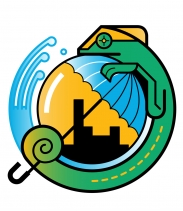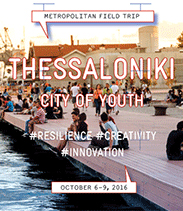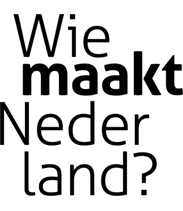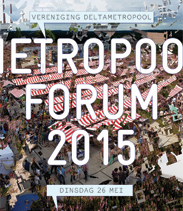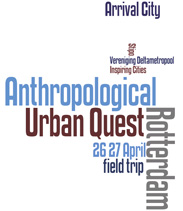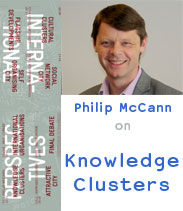The SprintCity project, an initiative from the Deltametropolis Assocation, is a collaborative, multi-disciplinary research endeavor. Using simulation software, SprintCity brings together stakeholders to analyse the opportunities for transit-oriented development.

|
SprintCity Publications (in English) | Update - SprintCity #6, project overview (2014) | (PDF) | Make place! - book on TOD in the Netherlands (2013) | | Scientific paper: Modeling serious game 'SprintCity' | (PDF) | Scientific paper: Insights from serious game 'SprintCity' | (PDF) |
Deltametropolis Association, an independent organisation with public and private members, functions as a platform for debate and discussion, as well as a laboratory for new ideas and applied research. The region in the Netherlands known as Randstad Holland is a ring-shaped agglomeration made up of Amsterdam, Rotterdam, The Hague, and Utrecht. Additional (contact) information in English about our association can be found | here |.

SprintCity objectives
The SprintCity project began in 2009 and is based on the principle that seamless and efficient public transport is necessary for the accessibility of the Randstad region, and pivotal for the functioning of the region and its competitiveness with other metropolises. With the main goal of identifying opportunities for development around existing rail infrastructures and improving high-frequency rail transport services, the objectives of the project are as follows:
(1) to promote transit-oriented development (TOD) in the Randstad region
(2) to investigate the interaction between mobility and spatial development
(3) to improve the coordination and collaboration amongst the various stakeholders
SprintCity rationale
In the last few decades, development has been planned outside of the the railway network, which has led to an overloaded road transport system, and contributed to congestion, suburban sprawl and the decrease of valuable agricultural land in the Green Heart of the country. To enhance accessibility and avoid further sprawl, the national government has set two goals for future urbanisation: (1) to increase densification around existing train stations and (2) to almost double train frequency levels in the Randstad to achieve “Olympic Quality".
The current economic crisis and political situation poses additional challenges and shifts in priorities. Government spending on station area development has dwindled and the remaining resources will be divided between road infrastructure and other transport modes.
To curb spending and maximise efficiency, the future for TOD in the Netherlands lies in transforming existing infrastructure on a smaller scale requiring multiple stakeholders and investors. SprintCity focuses on exactly that, by facilitating close collaboration between the railways (providing higher frequency) and the municipalities (planning urban development).
SprintCity research tools
SprintCity uses two main research tools to investigate and determine the connection between mobility and spatial development around rail stations:
Rail station area survey
The first tool is a comprehensive survey and analysis we perform on about 80 station areas (1200m around each station). We collect all the municipal/national development plans for each station area up until 2030 and aggregate geospatial, socio-economic, connectivity and land use indicators (building density, Floor Space Index).
Simulation software
The SprintCity computer-based simulation game simulates station area development, job growth, ridership and the change in train frequency for several stations along a rail corridor until the year 2030. The game is played by 6 teams consisting of 2 people: each whom have a different role in the process and who are actual stakeholders (urban planners, the Ministry of Transport, municipalities, provinces, housing corporations, rail infrastructure managers etc.). The tool has been used by over 300 participants, in over 30 simulation sessions.

Debates and lectures
The SprintCity team also organises a variety of debates and lectures on the topic of TOD.
SprintCity results
With over 30 SprintCity simulation sessions completed and the participation of 5 provinces, 6 city regions and 13 municipalities, SprintCity demonstrates that this knowledge can help decisionmakers plan station area developments on a network scale instead of being limited to the municipal scale. This saves time, resources and reduces the possibility of plan failure.
Because the simulation is based on real data and requires the participation of all stakeholders, the simulation sessions lead to in-depth discussions and a better understanding of the transport / land use interaction, which is essential for promoting and establishing TOD. The gaming sessions transfer scientific knowledge to real stakeholders and create new ways of cooperation between the many actors in the development process, including both private and public organisations.
SprintCity co-productions
We work together with numerous partners, including transport consultants, national and local governments, domestic and international universities, the Dutch Railway Company and the Dutch rail infrastructure manager (ProRail). Additional material include the following:
SprintCity 2.0
In February 2013, the new version of the SprinCity planning support tool was released.
Video debate
The | video debate 'Station to City' | took place at Lantaren/Venster, as part of the Architecture Film Festival Rotterdam (AFFR).
Lecture with Ryan Gravel
Ryan Gravel, initiator of | the Atlanta Beltline project |, gave a lecture on his findings and discussed Transit Oriented Development with other experts.
Articles @ Shenzhen conference
The underlying model of the simulation was also the subject of the paper presentation which was held on SprintCity at the NGI conference in Shenzhen in november 2010. The | presented articles | are available online (English PDF).
International collaboration
In order to identify opportunities for station area development in the Deltametropolis, we are also | studying strategies in other countries |. Despite different political contexts and realities, we exchange views on TOD strategies and the resulting urban form. This topic includes the specific roles of transport companies, rail infrastructure managers, local and national governments and investors in the process and new forms of cooperation. Please | contact us | if you have any questions regarding the Dutch practise, our research or would like to exchange information.
Activities and milestones:
- We have been researching the prospects and opportunities for TOD in the province of Noord-Holland. In May 2013, an atlas was published covering 64 station area, including the development strategies for 10 corridors.
- The planning support tool SprintCity has been applied to the Amsterdam – Heerhugowaard corridor. The simulation has shown that current policy will lead to dramatic results. The real stakeholders have therefore been challenged to collaborate more effectively during the simulation sessions, so that their individual and common goals can be realised.
- The simulation results and lessons learnt from the ‘Zaancorridor’ (i.e. the corridor between Amsterdam and Heerhugowaard), were presented at the ‘Plandag 2013’ in Antwerp (see: www.plandag.net/2013/)
More information: Update - SprintCity #6
Extensive information on the SprintCity project can be found in the SprintCity Updates. An English translation is available of the fifth issue. Read all about SprintCity in 2013, 2014 and beyond in | Update - SprintCity #6 |.
Participate!
Are you interested in the development of your own corridor or organising a simulationsession on an existing corridor? We invite you to contact us as a participant, sponsor or partner. Please contact us now via | SprintStad@deltametropool.nl |.
Projectpartners
The New Planning is a collaborative research project between Deltametropolis Association and TU Delft. A consortium of academic, civil society, government and market sectors is being created to meet the urgent need for a new model of strategic spatial planning that will keep the Netherlands at the forefront of territorial governance.

 Archief
Archief








